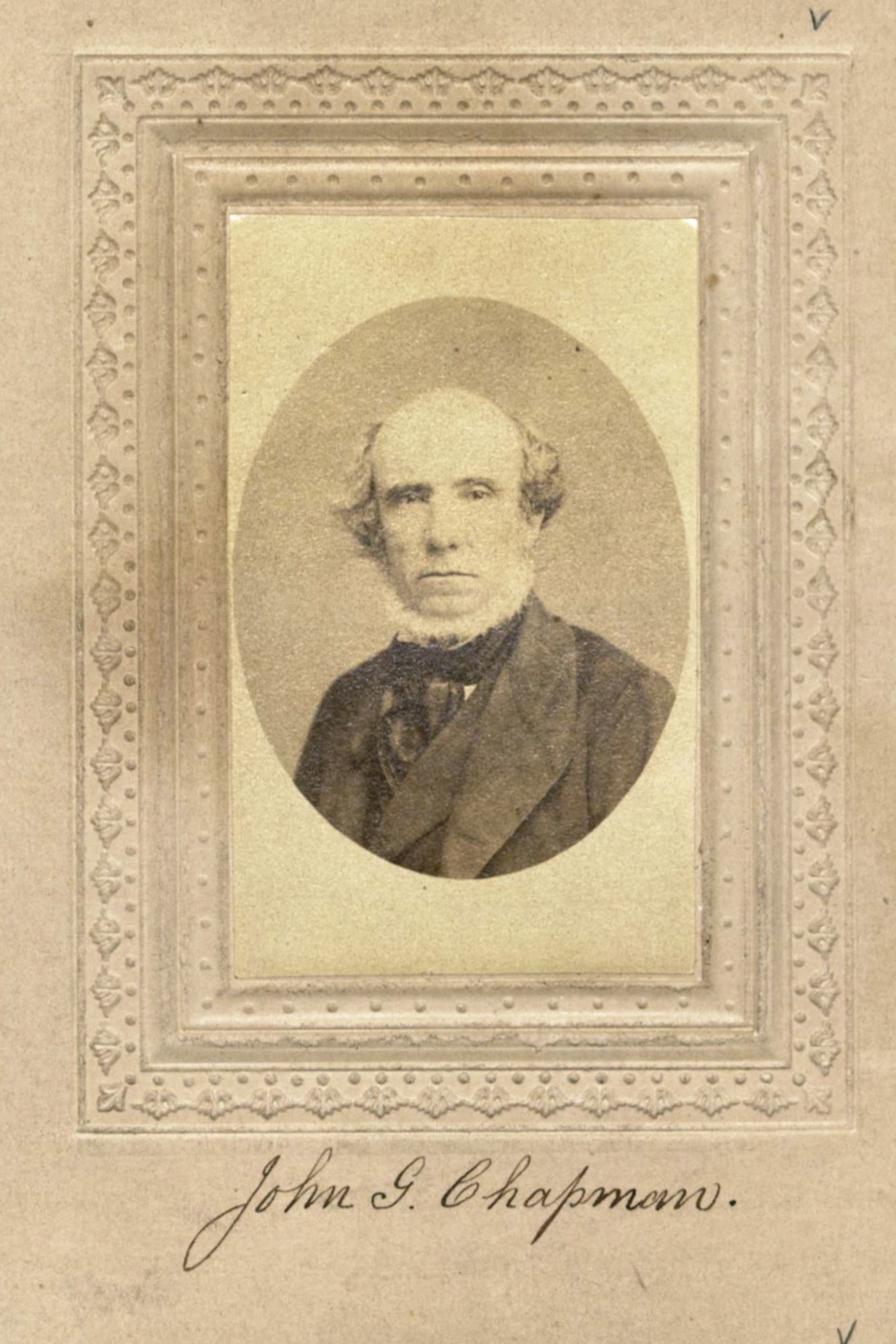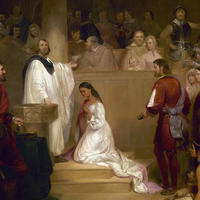More about John Gadsby Chapman
Works by John Gadsby Chapman

Contributor
Students of the mythology of the United States - the Republican experiment which grew from the British colonies in the midst of wars with the French, Spanish, and various alliances of indigenous people - should consult the life and work of John Gadsby Chapman.
John Gadsby Chapman arrived in an era in which artists on the public market were overtly aligned with the State and the story it tells the world: like George Catlin and Jacques-Louis David, Chapman was mythmaker to the empire-builders, just as necessary to the political system as any speechwriter, if not more so. These men were "poets" of the Revolutionary dogma, laden with its heavy Greco-Roman sentiments: clarity, transparency, accessibility, conquest and discovery. And "freedom"–from what, we were never sure, but it was usually said to be a tyrant overseas.
A student of Charles Bird King, famous for the 1823 portrait Mrs. John Quincy Adams and the 1822 Young Omaha, War Eagle, Little Missouri and Pawnees, both maintained by the Smithsonian American Art Museum, Chapman began painting in Virginia, where he was born, in 1827, but soon enrolled at the Pennsylvania Academy of the Fine Arts, then departed for Italy to study the traditions of Gothic, Renaissance, and mannerist devotional painting, in order to adapt them to his own Protestant proselytism.
The early days of the Republic are marked by the populism of Southern white men, like Chapman and his politician patrons who secured for him the fifth art commission for the Capitol building, the seat of Congress, which resulted in his painting The Baptism of Pocahontas. The painting put the same Protestant missionary narrative to work that so many slaveholders and Confederate politicians used to justify trafficking in men, women, and children: the whites were saving the people against their collective will.
Pygmalion is Ovid's story of a sculptor who falls in love with his sculpture, and then his love brings the sculpture to life, thanks to Venus. This is how Chapman understood his own process of making Baptism of Pocahontas: according to Grace Stelle Woodward, the man who prepared Pocahontas for her conversion saw her as his "Pygmalion." As a major scholar of Mataoka, also known as Pocahontas, and the narrative of her conversion, Chapman would have seen his own artwork as a parallel to the "artwork" of conversion.
Sources
- Birkle, Carmen. "Colonial Mother and Postcolonial Daughter." In Postcolonialism and Autobiography, edited by Alfred Hornung, et al.: 61-75. Amsterdam: Rodopi, 1998.
- Chapman, John Gadsby. The American drawing book: a manual for the amateur, and basis of study for the professional artist: especially adapted to the use of public and private schools, as well as home instruction. New York: J.S. Redfield, 1858.
- Chapman, John Gadsby. The Picture of the Baptism of Pocahontas: Painted by Order of Congress, for the Rotunda of the Capitol. London: P. Force, 1840.
- Kneebone, John T. Dictionary of Virginia Biography 3. Richmond, Virginia: Library of Virginia, 1998.
- von Rydingsvärd, Anna Maria. Art Studies for Schools: Or, Hints on the Use of Reproductions of High Art in the Schoolroom. A. Flanigan Company, 1903.
- Woodward, Grace Stelle. Pocahontas. Norman: University of Oklahoma Press, 1969.
Featured Content
Here is what Wikipedia says about John Gadsby Chapman

John Gadsby Chapman (December 3, 1808 – November 28, 1889) was an American artist famous for Baptism of Pocahontas, which was commissioned by the United States Congress and hangs in the United States Capitol rotunda.
Check out the full Wikipedia article about John Gadsby Chapman











